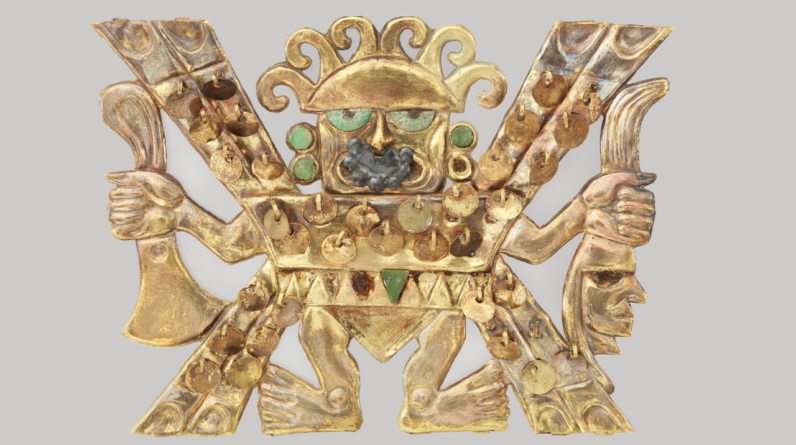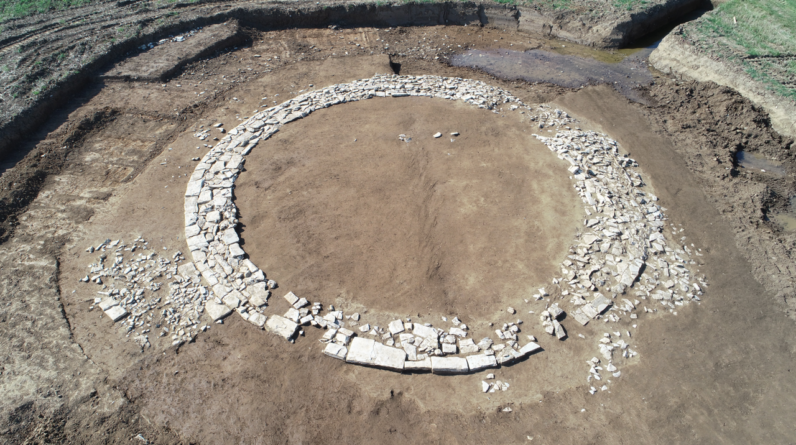
(Image credit: NASA/JPL-Caltech/ASU)
Scientists using the James Webb Space Telescope (JWST) have identified a component of water on the mysterious metal-rich asteroid Psyche. The findings suggest the hydration exists as rust and may shed light on how this enigmatic object formed.
The asteroid 16 Psyche is pretty unusual for the main asteroid belt between Mars and Jupiter. Measuring an enormous 173 miles (280 kilometers) at its widest, the potato-shaped object was once thought to be wholly metallic. Psyche’s supershiny surface had led researchers to suggest the asteroid was possibly the iron-rich heart of a planetesimal (a planetary building block) and could unravel how Earth and the other terrestrial planets formed. Some have valued the asteroid’s rare metal components at $100,000 quadrillion — a literal goldmine in space.
This hypothesis about the rock’s composition, in fact, is what motivated NASA‘s ongoing Psyche mission. Launched in October 2023, it’s expected to reach the asteroid in 2029 to study it in-depth.
But all that glitters isn’t gold — or even metal. Over the past decade, new data about Psyche’s density and reflectance spectra — the intensity of different wavelengths of sunlight reflected off the asteroid’s surface ― suggest it is most likely a mixed silicate and metal world.
Related: NASA’s most wanted: The 5 most dangerous asteroids to Earth
In 2017, researchers discovered tantalizing traces of another component: water. Spectra from the infrared region, at long wavelengths that we perceive as heat but can’t see, showed the signature of hydroxyl units — the OH molecule, which forms part of water.
These results suggested Psyche’s surface may contain small amounts of water, as either ice or hydrated minerals. But the results were inconclusive, since the spectrum, collected using NASA’s ground-based Infrared Telescope Facility in Hawaii, may have been corrupted by water in Earth’s atmosphere. Besides, the researchers hadn’t found a more definitive signature of water from a slightly higher infrared wavelength. That signature has helped other astronomers “detect widespread molecular water on the Moon but had not yet been used for asteroids,” study author Stephanie Jarmak, a planetary scientist at the Harvard and Smithsonian Center for Astrophysics, told Live Science in an email.
To determine if Psyche really has water, Jarmak and scientists from several U.S. and German institutes turned to two of JWST’s infrared-sensing instruments: the Near Infrared Spectrograph (NIRSpec) and the Mid-Infrared Instrument (MIRI), which can detect shorter and longer infrared wavelengths, respectively. By directing these instruments toward the asteroid in March 2023, the scientists collected snapshots of the spectrum reflected by Psyche’s north pole, which was then facing the telescope. Their results have been accepted by the Planetary Science Journal and are available as a preprint via arXiv.
The NIRSpec data showed the hydroxyl signature, confirming its presence on the asteroid. What’s more, Jarmack noted, the high-quality data allowed comparisons with hydroxyl signatures from other meteorites, revealing that Psyche’s hydroxyl signature resembled that from certain rust-bearing, carbon-rich meteorites. This finding led the researchers to conclude that hydroxyls are bonded to metals on Psyche, forming rust.
But the MIRI data lacked the conclusive signature of water. Still, the researchers can’t rule out the presence of water, as it could be present on other parts of Psyche that JWST couldn’t see. It’s also possible that water is present but at concentrations below MIRI’s detection limit, making it less than half the concentration of water on the moon, which is itself only a raindrop’s equivalent in 2.25 pounds (1 kg) of soil.
Apart from forming rust, Psyche’s hydroxyl groups provide hints about how the asteroid formed. If the hydroxyl formed within the asteroid, this could indicate Psyche was born in the cold, outer bounds of the solar system and tottered inward over millions of years. However, the existing evidence suggests water-bearing asteroid impactors that slammed into Psyche and shaped it also brought the hydroxyl.
Future plans include studying exactly where the hydrated metals are found on Psyche’s surface, Jarmak said, adding that these include “observations of Psyche’s south pole that contains a large crater that may have resulted from an encounter with a hydrated impactor.”
Metal-rich asteroids are lucrative sources of rare minerals and the subject of future space mining ventures. However, despite its estimated value, Psyche isn’t among them — at three times Earth’s distance from the sun, it’s too far for extraction efforts to be cost-effective.
As an Amazon Associate I earn from qualifying purchases.







